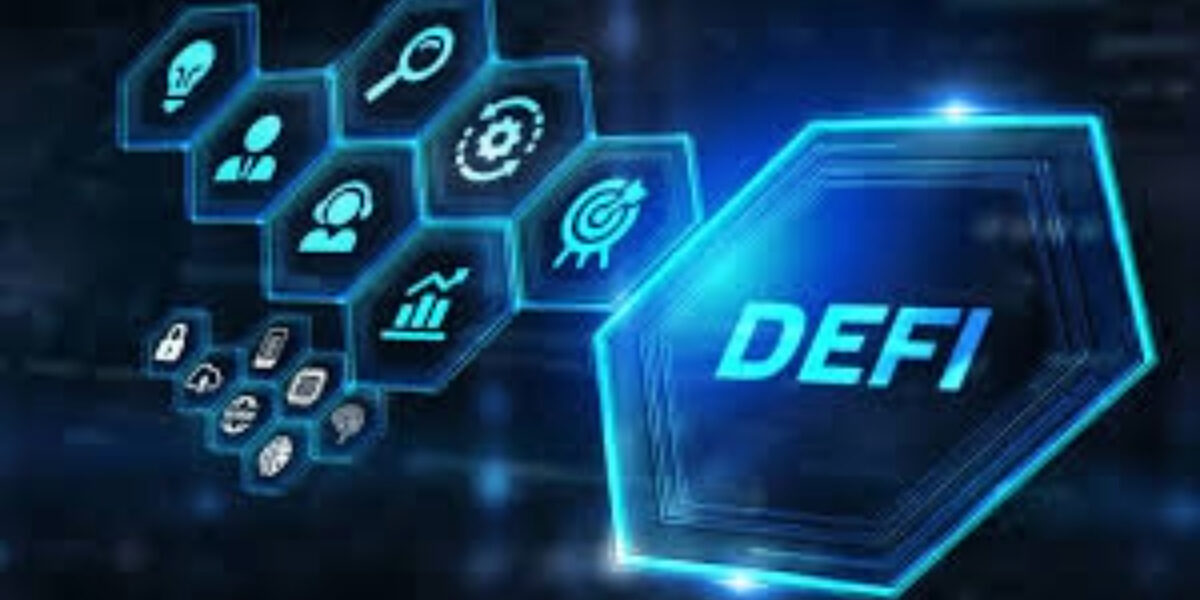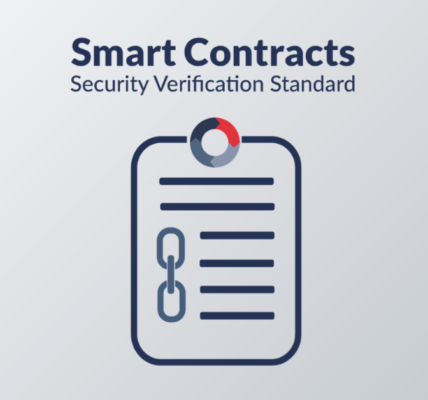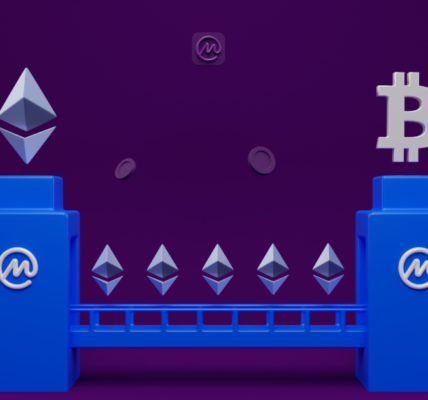Decentralized finance (DeFi) has rapidly emerged as a powerful alternative to traditional financial systems. With its promise of transparency, security, and inclusivity, DeFi has reshaped the way individuals and businesses think about financial services. At the heart of DeFi is the use of blockchain technology to create decentralized applications (dApps) and protocols that eliminate the need for intermediaries. However, while DeFi has largely focused on digital assets like cryptocurrencies, it is now beginning to embrace the tokenization of real-world assets (RWAs), further transforming the financial ecosystem.
The integration of real-world assets into DeFi protocols has the potential to unlock new opportunities for both investors and businesses. In this article, we’ll explore what real-world assets are, how they are being tokenized, and how their inclusion in DeFi is driving innovation across various sectors.
What Are Real-World Assets?
Real-world assets refer to physical or traditional assets that have intrinsic value, such as real estate, commodities, stocks, bonds, and even art. These assets are typically illiquid, meaning they are not easily tradable or convertible into cash without significant time, effort, and cost. The tokenization of real-world assets is the process of representing these physical assets as digital tokens on a blockchain, enabling them to be traded and transferred in a decentralized manner.
Tokenization allows for fractional ownership of these assets, making them more accessible to a broader range of investors. For example, a real estate property worth millions of dollars can be divided into fractional tokens, allowing multiple investors to own a share of the property without needing to buy the entire asset. This opens up the world of high-value assets to retail investors who would otherwise be excluded from these markets.
Tokenization of Real-World Assets
Tokenization involves creating a digital representation of an asset that is secured and tracked on a blockchain. These tokens are typically backed by the underlying real-world asset, meaning the value of the token is tied directly to the value of the asset. For example, a token representing a piece of real estate would be backed by the ownership of the property, and its value would be directly correlated with the market value of the property.
There are several key benefits to tokenizing real-world assets in the DeFi ecosystem:
- Increased Liquidity: Tokenization makes traditionally illiquid assets, such as real estate or fine art, more liquid by enabling fractional ownership. This means investors can buy and sell shares of these assets more easily, increasing the overall liquidity of the asset class.
- Lower Barriers to Entry: Tokenization reduces the minimum investment required to participate in asset markets. Instead of needing large sums of capital to invest in real estate or other high-value assets, investors can purchase smaller fractions of these assets, democratizing access to investment opportunities.
- Global Accessibility: Blockchain technology is inherently global, which means tokenized assets can be traded across borders without the need for intermediaries or centralized exchanges. This opens up investment opportunities to a global pool of investors and removes geographic barriers.
- Transparency and Security: The use of blockchain ensures that tokenized assets are tracked on an immutable ledger, providing transparency and security to both asset owners and investors. Blockchain’s decentralized nature also reduces the risk of fraud or manipulation, which is a common concern in traditional financial markets.
How DeFi Is Using Real-World Assets
DeFi protocols are increasingly integrating real-world assets into their platforms, providing users with new ways to interact with traditional asset classes through decentralized financial products. This integration is helping to bridge the gap between the traditional finance world and the decentralized finance ecosystem. Here are some ways in which real-world assets are being used in DeFi:
Collateralization of Real-World Assets
One of the most prominent use cases for real-world assets in DeFi is their use as collateral in lending platforms. Traditional lending systems typically require borrowers to provide collateral in the form of physical assets or cash to secure a loan. In DeFi, real-world assets can be tokenized and used as collateral in decentralized lending platforms, such as MakerDAO, which allows users to lock up tokenized real estate or other assets to secure a loan in stablecoins.
By using tokenized real-world assets as collateral, borrowers can access liquidity without having to liquidate their physical assets. This unlocks new opportunities for individuals and businesses to obtain credit, particularly in markets where access to traditional banking services may be limited.
Decentralized Asset Trading
Tokenized real-world assets also enable the creation of decentralized asset exchanges, where investors can trade ownership stakes in traditional assets like real estate, commodities, and even stocks. These exchanges operate in a decentralized manner, meaning that they do not rely on intermediaries like brokers or exchanges to facilitate trades. Instead, they rely on smart contracts to execute transactions and ensure the security of trades.
One example of a decentralized exchange for real-world assets is OpenOcean, a platform that allows users to trade tokenized commodities and other real-world assets. By enabling peer-to-peer trading of tokenized assets, DeFi platforms are creating new avenues for investors to access traditional markets while benefiting from the advantages of decentralization, such as lower fees and faster transaction times.
Yield Farming with Tokenized Assets
Yield farming is a popular DeFi strategy in which users provide liquidity to decentralized protocols in exchange for rewards, typically in the form of native tokens. Tokenized real-world assets can also be used in yield farming strategies, where users stake tokenized assets in liquidity pools to earn rewards.
For example, a tokenized version of a piece of real estate could be staked in a liquidity pool to provide liquidity for a DeFi lending platform. In return, the staker could earn a portion of the platform’s transaction fees or governance tokens. Yield farming with real-world assets helps to enhance the liquidity of these assets and provides new ways for investors to earn passive income.
Security Tokens and Asset-Backed Tokens
Security tokens are a category of tokenized real-world assets that represent ownership of traditional securities like stocks, bonds, or investment funds. These tokens are typically regulated and comply with existing securities laws, ensuring that they meet the legal requirements for trading and ownership.
In DeFi, security tokens can be used to trade traditional financial assets in a decentralized manner. For example, a security token representing a bond can be traded on a decentralized exchange, allowing investors to buy and sell bonds without the need for centralized intermediaries.
Similarly, asset-backed tokens represent ownership of tangible assets, such as real estate, gold, or fine art. These tokens are typically backed by the physical asset and can be traded or used as collateral in DeFi protocols. The integration of asset-backed tokens into DeFi is helping to create a more seamless connection between the traditional financial world and the blockchain ecosystem.
Challenges and Risks of Tokenizing Real-World Assets
While the tokenization of real-world assets offers numerous benefits, it also comes with several challenges and risks that must be addressed to ensure the security and stability of DeFi protocols.
- Regulatory Uncertainty: The regulatory environment surrounding tokenized real-world assets is still evolving. Many jurisdictions have yet to establish clear guidelines on the legal status of tokenized assets, and there is uncertainty around how existing financial regulations apply to these new digital assets. DeFi projects working with tokenized assets must navigate this uncertainty and ensure that they comply with relevant regulations.
- Valuation and Price Discovery: One of the challenges of tokenizing real-world assets is determining the correct valuation and price of the underlying asset. Unlike cryptocurrencies, which are traded on public exchanges with transparent pricing data, real-world assets often have less liquid markets, making it harder to determine their value accurately. This can lead to discrepancies in the price of tokenized assets and pose risks for investors.
- Custody and Ownership Verification: For tokenized assets to be valuable, there must be a reliable way to verify ownership and ensure that the underlying asset is properly secured. This is particularly important for physical assets like real estate, where proof of ownership and proper custody must be established. DeFi protocols working with real-world assets must ensure that they have robust systems in place to verify ownership and protect against fraud.
- Liquidity Risk: While tokenization can enhance the liquidity of real-world assets, it is important to note that not all tokenized assets will have high trading volumes or liquid markets. Liquidity risk remains a concern, especially for niche or illiquid asset classes like fine art or collectibles. Investors must be aware of the potential lack of liquidity when investing in tokenized real-world assets.
Conclusion
The tokenization of real-world assets is one of the most exciting developments in the DeFi space. By enabling traditional assets like real estate, commodities, and stocks to be traded on blockchain networks, tokenization is opening up new opportunities for investors, businesses, and financial institutions. The ability to fractionalize ownership, increase liquidity, and provide global accessibility is transforming how we think about finance and investment.
However, tokenizing real-world assets also comes with challenges, including regulatory uncertainty, valuation issues, and the need for secure custody solutions. As the DeFi space continues to mature, it will be crucial for developers, regulators, and industry participants to address these challenges and work together to ensure that tokenized real-world assets can be safely and efficiently integrated into decentralized finance.
As we look to the future, the tokenization of real-world assets holds the potential to bridge the gap between traditional finance and DeFi, creating a more inclusive, accessible, and transparent financial system for all.




